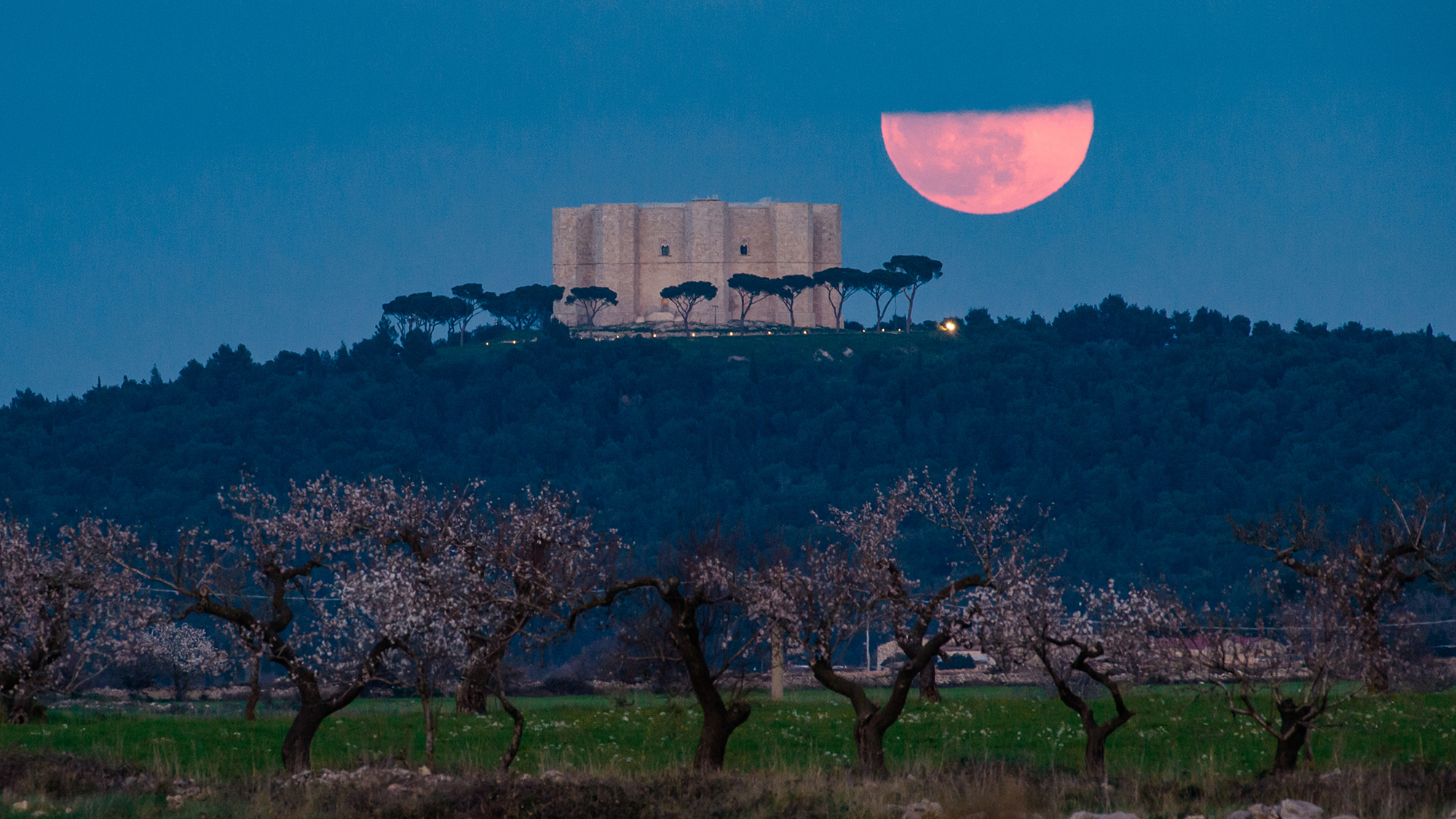

| March 15 through 31 | Look for Mercury |
| March 20 | Vernal Equinox |
| March 25 | Full Worm Moon |
| March 25 | Penumbral Lunar Eclipse |
The countdown to April’s solar eclipse has begun, but there is still a month of fun stargazing opportunities to keep us excited before the big show. Weather folklore says that in the Northern Hemisphere, the third month of the year goes “in like a lion, out like a lamb.” Usually, we can expect fierce wintery weather to kick off March and calm springlike weather to end it. While it is tough to predict exactly what kind of weather that the transitional and temperamental month of March brings, there are some cosmic events to keep your eye on as the days start to get a little bit longer.
[Related: Delta’s solar eclipse flight sold out, but your best bet to see it is still down here.]
March 15 through 31– Look for Mercury
With a radius of only 1,516 miles, Mercury is our solar system’s smallest planet and the closest to our sun. Since it is located so near the sun’s bright rays and is so tiny, it can be more difficult to spot in the night sky. Starting around March 15, Mercury’s apparent distance from the sun will be just far enough away for stargazers to get a look at this planet.
According to the Adler Planetarium in Chicago, it’s best to begin looking to the western sky about 40 minutes after sunset. It will be about seven to 10 degrees above the horizon, so try to have a clear sightline without a lot of interference from buildings or trees. It will reach its greatest eastern elongation on March 24, and then get slightly dimmer as the month winds down.
March 20–Vernal Equinox
The Vernal Equinox is also known as the first day of spring. The season technically arrives in the Northern Hemisphere at 11:06 p.m. EDT on March 19, or March 20 at 3:06 a.m. Coordinated Universal Time (UTC). This is the standard measurement used to keep time zones organized and is maintained by very precise atomic clocks that are housed at laboratories all over the world. The United States Naval Observatory keeps official time in the United States.
The equinox occurs twice a year (once in the spring and once in the fall). The March equinox brings earlier sunrises, later sunsets and sprouting plants to the Northern Hemisphere and the opposite effects to the Southern Hemisphere.
March 25– Full Worm Moon
This month’s full moon will reach peak illumination at 3:00 a.m. EDT on Monday, March 25. Beginning on March 24, the bright moon will begin to rise above the horizon. This month’s moon is also the Paschal Full Moon. This is what determines when Easter is celebrated. The holiday is always commemorated on the first Sunday after the first full moon of spring, so this year Easter will be on Sunday, March 31.
[Related: Why scientists think it’s time to declare a new lunar epoch.]
The origin of the name worm moon has a few different stories. Originally, it was believed to refer to the time of year when earthworms emerge, as snow melts and soil warms. However, recent research from the Farmer’s Almanac found that during the 1760s, Captain Jonathan Carver, a colonial explorer from Massachusetts, visited the Naudowessie (Dakota) and other Native American tribes and wrote that “Worm Moon” refers to beetle larvae which start to emerge from the thawing bark of trees and places they hide out during the winter.
Additional names for March’s full moon include the Snowshoe Breaking Moon or Bebookwedaagime-giizis in Anishinaabemowin (Ojibwe), the Hackberry Month or Niyó’not’à:h in Seneca, and the Spring Moon or Upinagasraq or in the Inupiat language.
March 25– Penumbral Lunar Eclipse
While not quite as dramatic as next month’s solar eclipse, there will be a penumbral lunar eclipse on March 25. This occurs when the moon passes through the Earth’s partial shadow, or penumbra. The moon will darken slightly, but not completely. According to NASA, this month’s eclipse will be visible throughout all North America, Mexico, Central America, and South America. For the best viewing time near you, check out timeanddate.com.
The same skygazing rules that apply to pretty much all star gazing activities are key this month: Go to a dark spot away from the lights of a city or town and let your eyes adjust to the darkness for about a half an hour.
